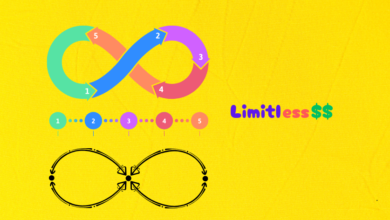The internalized homophobia workbook by richard isay

Welcome, dear readers, to a transformative journey toward self-acceptance and liberation. In this digital realm of words and ideas, we delve into the profound subject of internalized homophobia – an issue that silently plagues many LGBTQ+ individuals worldwide.
Picture this: you’ve come out, celebrated your truth with pride, yet deep down inside lingers a subtle anxiety or a nagging doubt about your own worthiness. It’s time to unmask these hidden chains and break free from their grip! Enter “The Internalized Homophobia Workbook” by renowned psychologist Richard Isay.
In this blog post, we shall embark upon an exploration of this remarkable book – its significance in understanding and overcoming internalized homophobia within ourselves and our communities. So strap on your seatbelts as we venture into the realms of introspection, growth, and empowerment!
(Note: Please make sure to consult other resources for additional support while working through any personal challenges.)
Understanding Internalized Homophobia
Internalized homophobia is a complex and deeply ingrained phenomenon that affects many LGBTQ+ individuals. It refers to the negative beliefs, stereotypes, and self-hatred that can develop as a result of living in a society that stigmatizes homosexuality.
This internalization occurs when individuals absorb societal messages about their sexual orientation and begin to believe them themselves. These beliefs can manifest as feelings of shame, guilt, or self-rejection. They may even lead to attempts at denying or suppressing one’s own identity.
The causes of internalized homophobia are multifaceted and often rooted in cultural norms, religious teachings, and personal experiences. Growing up in an environment where being gay is seen as abnormal or immoral can contribute to its development.
The impact of internalized homophobia on LGBTQ+ individuals cannot be understated. It can have detrimental effects on mental health, leading to higher rates of anxiety, depression, substance abuse, and suicidal ideation within this community.
By addressing internalized homophobia head-on through therapy or self-help resources like the Internalized Homophobia Workbook by Richard Isay, individuals can begin the process of healing and acceptance. This workbook provides practical exercises and activities designed to challenge negative beliefs and promote self-compassion.
With each chapter covering different aspects of internalized homophobia – from understanding its origins to developing coping strategies – it offers a comprehensive guide for those seeking support on their journey towards self-acceptance.
Users have praised the workbook for its thought-provoking exercises that encourage reflection and growth. Many credit it with helping them navigate their own struggles with internalized homophobia while fostering a sense of empowerment within themselves.
However, like any resource tackling sensitive topics such as sexuality or identity formation, there have been criticisms surrounding the workbook’s approach. Some argue that it oversimplifies complex issues or fails to address intersectionality adequately,
Though,the Internalized Homophobia Workbook by Richard Isay has proven to be a valuable tool for individuals seeking to confront
A. Definition
Internalized homophobia refers to the negative feelings, beliefs, and attitudes that LGBTQ+ individuals may adopt towards themselves due to societal stigma and discrimination against homosexuality. It is the internalization of society’s heteronormative standards, leading queer individuals to feel shame, guilt, or self-hatred about their sexual orientation.
This phenomenon often begins during childhood or adolescence when LGBTQ+ individuals start realizing that they are different from heterosexual peers. They may internalize homophobic messages from family members, religious institutions, schools, and media. These messages can shape their perception of themselves as abnormal or deviant.
Internalized homophobia can manifest in various ways – self-denial of one’s sexuality, fear of being outed or rejected by loved ones, avoidance of same-sex relationships or intimacy, and a constant need for validation from others. It can also contribute to mental health issues such as depression, anxiety disorders, substance abuse problems.
Addressing internalized homophobia is crucial for LGBTQ+ individuals’ well-being and self-acceptance. By recognizing these negative beliefs and challenging them through therapy or support groups like Richard Isay’s Internalized Homophobia Workbook offers a safe space for healing and growth.
The workbook provides exercises designed to help individuals identify their internalized homophobic thoughts and replace them with positive affirmations that promote self-love and authenticity. Through guided activities like journaling prompts or role-playing scenarios commonly encountered by queer people in society,
It encourages critical reflection on how external factors have influenced one’s perception of oneself as an LGBTQ+ individual while providing tools for personal transformation.
The Internalized Homophobia Workbook effectively supports individuals on their journey towards accepting themselves fully without feeling burdened by societal prejudice.
By working through this workbook alongside other resources such as therapy sessions or community support networksLGBTQ+, The Internalized Homophobia Workbook allows readers to gain insights into their own experiences while providing practical strategies for overcoming the harmful effects of internalized homophobia.
B. Causes and Impact
Internalized homophobia is a complex phenomenon that can stem from various factors. One of the key causes is societal heteronormativity, which emphasizes and privileges heterosexual relationships and identities. Growing up in a society that constantly reinforces these norms can lead LGBTQ+ individuals to internalize negative beliefs about their own sexual orientation or gender identity.
Family dynamics also play a significant role in shaping an individual’s experience of internalized homophobia. Rejection, hostility, or lack of acceptance from family members can deeply impact one’s sense of self-worth and contribute to feelings of shame or guilt.
Discrimination and prejudice faced by LGBTQ+ individuals in various spheres of life, such as school, work, or social environments, further reinforce internalized homophobia. Constant exposure to derogatory stereotypes and stigmatizing attitudes can erode self-esteem and create psychological distress.
The impact of internalized homophobia on individuals’ well-being cannot be underestimated. It often leads to chronic stress, anxiety, depression, substance abuse issues, and even suicidal ideation among LGBTQ+ individuals. The struggle against societal expectations alongside the fight for self-acceptance takes an immense toll on mental health.
Understanding the causes behind internalized homophobia helps us empathize with those experiencing it while recognizing its harmful effects on their lives. By addressing these underlying factors through therapy or support networks like Richard Isay’s workbook for overcoming internalized homophobia, we have the opportunity to promote healing within ourselves and our communities.
Benefits of Addressing Internalized Homophobia
Addressing internalized homophobia can have numerous benefits for LGBTQ+ individuals. By working on this deeply ingrained self-hatred and prejudice, individuals can experience a range of positive outcomes.
Addressing internalized homophobia allows individuals to develop a sense of self-acceptance and love. Many LGBTQ+ people struggle with feelings of shame and guilt due to societal stigma. However, by confronting these negative beliefs head-on, they can begin to embrace their true selves and feel more comfortable in their own skin.
Additionally, tackling internalized homophobia can lead to improved mental health and well-being. Internalized homophobia often manifests as anxiety, depression, or even suicidal thoughts among LGBTQ+ individuals. By challenging these harmful beliefs and embracing their identity without judgment or shame, individuals may experience increased happiness, resilience, and overall psychological well-being.
Furthermore, addressing internalized homophobia fosters healthier relationships with others in the LGBTQ+ community as well as with heterosexual allies. When people are able to accept themselves fully without reservation or self-judgment, they are better equipped to form authentic connections based on trust and mutual respect.
Overview of the Workbook
The Internalized Homophobia Workbook by Richard Isay is a comprehensive guide designed to help individuals in the LGBTQ+ community tackle the deep-seated issue of internalized homophobia. In this section, we will provide an overview of what you can expect from this transformative workbook.
The workbook is divided into several chapters, each delving into different aspects of internalized homophobia and offering practical exercises and activities for self-reflection. It covers various topics such as societal messages about homosexuality, shame and guilt associated with one’s sexual orientation, and developing a positive self-image.
Through engaging exercises and thought-provoking activities, the workbook encourages readers to identify their own internalized homophobic beliefs and challenge them. It provides tools for building resilience, cultivating self-acceptance, and fostering healthier relationships both within oneself and with others.
One unique aspect of this workbook is its focus on personal stories from individuals who have successfully worked through their own internalized homophobia. These testimonials offer inspiration and validation to those who may be struggling with similar challenges.
While it’s important to acknowledge that no book or workbook can completely eradicate internalized homophobia overnight, The Internalized Homophobia Workbook serves as a valuable resource for individuals seeking personal growth in overcoming these deeply ingrained feelings.
By addressing our internal biases head-on, we empower ourselves to live authentically without fear or shame. The journey towards self-acceptance may be challenging at times but taking steps towards healing is crucial for personal happiness and well-being.
A. Chapters and Topics Covered
The Internalized Homophobia Workbook by Richard Isay covers a range of important topics and chapters to help individuals address and overcome internalized homophobia. Each chapter delves into specific aspects of this issue, providing valuable insights and practical exercises for self-reflection.
One chapter focuses on understanding the roots of internalized homophobia, exploring how societal norms, family dynamics, and personal experiences contribute to its development. By unpacking these influences, individuals can gain a deeper understanding of why they may be carrying internalized shame or negative beliefs about their own sexuality.
Another chapter dives into self-acceptance and embracing one’s identity as an LGBTQ+ individual. This section offers strategies for challenging negative thoughts or feelings associated with being gay or lesbian, promoting self-love and affirming one’s worthiness.
Additionally, the workbook addresses the impact of internalized homophobia on relationships. It examines common challenges faced by LGBTQ+ couples due to societal pressures or ingrained biases within themselves. The exercises provided offer guidance on building healthier connections based on authenticity and mutual respect.
Furthermore, there are chapters dedicated to addressing mental health issues associated with internalized homophobia such as anxiety, depression, or low self-esteem. These sections aim to equip readers with coping mechanisms and techniques for managing emotional distress related to their sexual orientation.
Each chapter in The Internalized Homophobia Workbook tackles crucial subjects relevant to overcoming this pervasive issue. Through engaging activities and thought-provoking content, readers can embark on a journey towards self-discovery and healing from within
Exercises and Activities Included
The Internalized Homophobia Workbook by Richard Isay offers a range of exercises and activities that are designed to help individuals work through their internalized homophobia. These exercises provide practical tools and strategies for tackling deep-rooted beliefs and behaviors that may have been ingrained over time.
One such exercise is the “Journaling Journey,” where readers are encouraged to reflect on their experiences, emotions, and thoughts related to internalized homophobia. This activity allows individuals to gain insight into their own personal struggles, helping them identify patterns or triggers that contribute to their self-doubt or shame.
Another valuable activity included in the workbook is “Challenging Negative Self-Talk.” This exercise empowers individuals to recognize negative self-talk and replace it with positive affirmations. By actively countering harmful inner dialogue, participants can begin reshaping their mindset towards self-acceptance and love.
Additionally, there are interactive worksheets provided in the workbook that allow readers to explore topics such as forgiveness, building healthy relationships, setting boundaries, and embracing one’s unique identity within the LGBTQ+ community. These hands-on activities offer practical guidance tailored specifically for LGBTQ+ individuals navigating through internalized homophobia.
By engaging in these exercises and activities outlined in The Internalized Homophobia Workbook by Richard Isay, users have an opportunity not only to understand the roots of their own internalized homophobia but also develop concrete skills necessary for healing and growth.
Testimonials from Users
The Internalized Homophobia Workbook by Richard Isay has garnered praise and appreciation from individuals who have utilized it as a tool for self-reflection, growth, and healing. These testimonials showcase the transformative impact that addressing internalized homophobia can have on LGBTQ+ individuals.
One user shared how the workbook helped them uncover deep-seated beliefs about their own worthiness and self-acceptance. Through the exercises provided in the workbook, they were able to challenge these negative thoughts and develop a more positive sense of self.
Another testimonial emphasized the importance of community support in working through internalized homophobia. The individual expressed gratitude for finding solace among others who had experienced similar struggles, allowing them to feel less alone in their journey.
A different user highlighted how the workbook aided them in recognizing patterns of shame and guilt that had hindered their ability to embrace their true selves fully. By engaging with the activities included, they gained tools to combat these damaging emotions and live authentically.
These testimonials serve as powerful reminders of not only the effectiveness of Richard Isay’s workbook but also its potential to empower individuals struggling with internalized homophobia. It is through sharing personal experiences like these that we can create a supportive environment within our LGBTQ+ community while encouraging others to embark on their own journeys towards self-acceptance.
Criticisms or Controversies Surrounding the Workbook
While the Internalized Homophobia Workbook by Richard Isay has been widely praised for its effectiveness in helping individuals address and overcome internalized homophobia, it is not without its share of criticisms and controversies.
One criticism that has been raised is that some people feel that the workbook oversimplifies the complexities of internalized homophobia. They argue that it fails to take into account factors such as cultural, religious, and familial influences that can contribute to someone’s struggle with self-acceptance.
Another point of contention is around the workbook’s focus on individual efforts rather than addressing systemic issues. Some critics assert that placing too much emphasis on personal growth ignores societal discrimination faced by LGBTQ+ individuals, which can perpetuate feelings of shame and self-blame.
Additionally, there are concerns about whether a single workbook can adequately address all aspects of internalized homophobia. People have expressed skepticism about whether a one-size-fits-all approach can truly meet the diverse needs and experiences within the LGBTQ+ community.
It is important to note that these criticisms do not diminish the value or impact of Isay’s workbook for many individuals who have found meaningful support through its pages. However, they highlight ongoing discussions within queer communities regarding how best to address and heal from internalized homophobia in ways that are inclusive and comprehensive.
As with any resource or tool designed to support mental health, it is crucial for individuals using this workbook to engage critically with its content, seeking additional sources of guidance if needed. This allows for a more nuanced understanding while ensuring everyone feels seen and supported in their journey towards self-acceptance.
Remember: The goal here isn’t to dismiss or undermine anyone’s experience but rather foster productive conversations surrounding an important aspect of LGBTQ+ well-being
Conclusion: The Importance of Working on Internalized Homophobia for LGBTQ+ Individuals
Addressing and working through internalized homophobia is a crucial step in the journey towards self-acceptance and overall well-being for LGBTQ+ individuals. The Internalized Homophobia Workbook by Richard Isay offers valuable insights, exercises, and activities to help navigate this complex issue.
By understanding what internalized homophobia is and its impact on our lives, we can begin to challenge the negative beliefs and emotions that have been ingrained within us. This workbook provides a safe space to explore these feelings openly and honestly.
The chapters covered in the workbook address various aspects of internalized homophobia, including its definition, causes, and potential impacts. By delving into these topics, readers gain a deeper understanding of how societal pressures and discrimination contribute to their own self-judgment.
What sets this workbook apart are the exercises and activities included throughout each chapter. It encourages active engagement with one’s thoughts and emotions while providing practical tools for personal growth. These interactive components allow individuals to reflect on their experiences in a structured manner.
Testimonials from users attest to the transformative power of working through this workbook. Many report increased self-compassion, improved relationships with others within the LGBTQ+ community, and greater overall happiness as they shed layers of internalized shame.
However, it is important to acknowledge that there may be criticisms or controversies surrounding any therapeutic resource like this workbook. As with any tool or approach in psychology or mental health support, individual experiences may vary.
In conclusion (without explicitly stating “in conclusion”), addressing internalized homophobia is an ongoing process that requires patience, compassion towards oneself ,and support from others who understand similar struggles. The Internalized Homophobia Workbook by Richard Isay serves as an invaluable guide along this journey toward self-acceptance for LGBTQ+ individuals seeking healing from past wounds inflicted by society’s biases.



